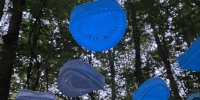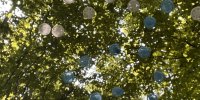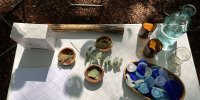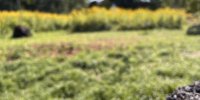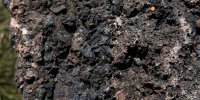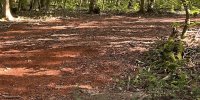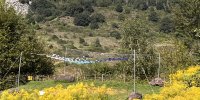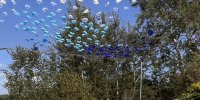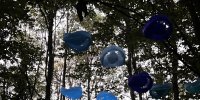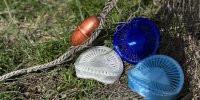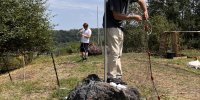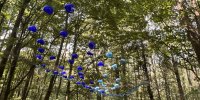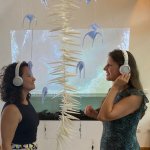Drifters
The artistic series “Drifters” serves as a reminder that today’s life on Earth has its origins in the depths of the seas. More than half of the world’s oxygen is produced by phytoplankton. Over 3 billion years ago, one of the first types of phytoplankton, cyanobacteria, began contributing to the oxygenation of Earth’s atmosphere through photosynthesis, which made the development of more complex life possible. Thus, phytoplankton also plays a key role in the global carbon cycle. Inspired by the complex and vital ecosystems of the oceans, “Drifters” also highlights the threats that phytoplankton face today. These include climate change, overfishing, and microplastic pollution, which endanger their health and the entire marine ecosystem.
Forest Art Path:
On the Forest Art Path, the ocean is symbolically brought to the continent. Here, the two most important oxygen producers on Earth meet: trees and phytoplankton. The “Drifters” installation consists of an old fishing net with 3D prints of phytoplankton (diatoms) attached. This net-like structure is suspended between the trees and interacts with the changing patterns of penetrating sunlight, creating a fascinating play of light and shadow. Selected forms of phytoplankton are highlighted with fluorescent paint to represent the characteristic bioluminescence of certain species. This glowing element evokes the impression of a nocturnal sea coming to life in the forest. On the ground, the imagined seabed, lies oil shale from the Messel pit, which also contains dead phytoplankton. This geological connection underscores the historical significance of phytoplankton in the global carbon cycle and its role in Earth’s history.
Messel pit:
The Messel pit is a time capsule filled with oil shale from the long-lost world of an ancient lake. Encased in the layers of rock, the phytoplankton whisper their story. Millions of years of transformation tell of microscopic communities that have evolved into compressed remnants of carbon and life. The “Drifters” installation at the Messel pit consists of an old fishing net with 3D prints of specific phytoplankton (diatoms) attached. This net-like structure is suspended among the old slag from the site’s oil extraction processes and interacts with the changing patterns of penetrating sunlight, creating a fascinating play of light and shadow. Selected forms of phytoplankton are highlighted with fluorescent paint to represent the characteristic bioluminescence of certain species. On the ground, the imagined seabed, lies “rusty” oil shale, which also contains dead phytoplankton. This geological connection underscores the historical significance of phytoplankton in the global carbon cycle and its role in Earth’s history.
The scientific research for this art project was supported by the Alfred Wegener Institute, among others. “Drifters” invites visitors to reflect on the fascinating connection between land and sea and recognize the importance of these invisible life forms for our daily lives and the global ecosystem.
CREDITS
Artists: Nina Bendzko
Format: Installation made out of old fisher net, 3D print, oil shale
Year: 2024

